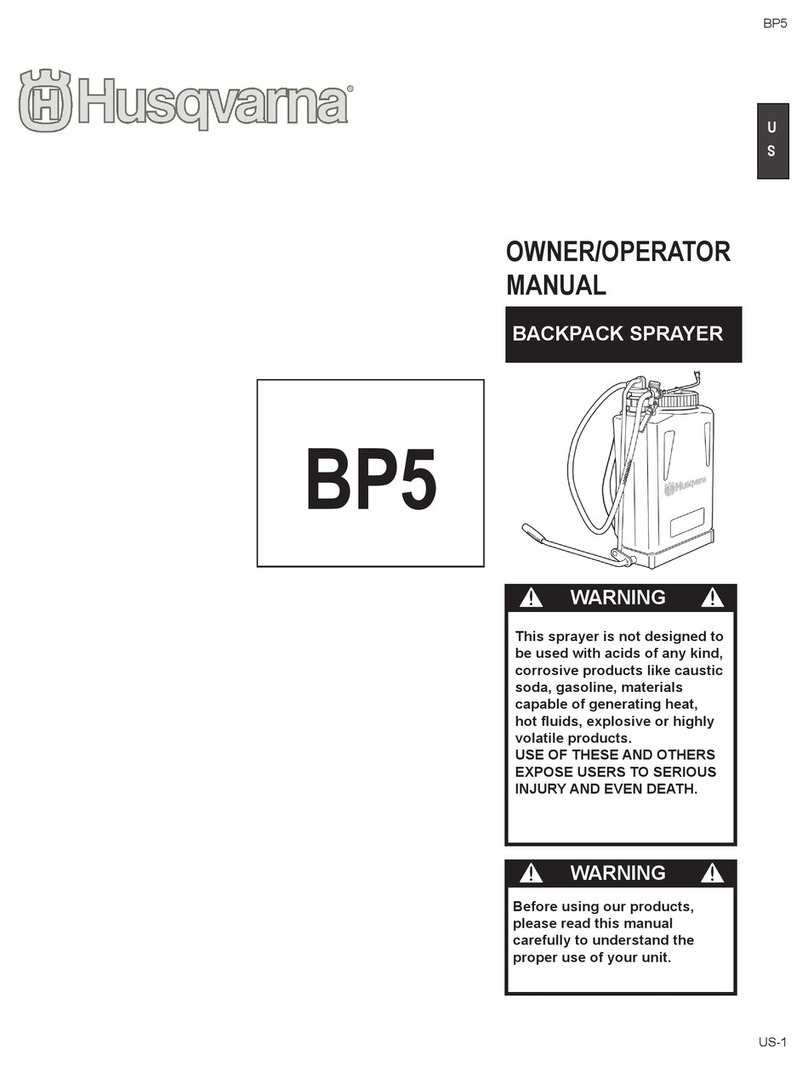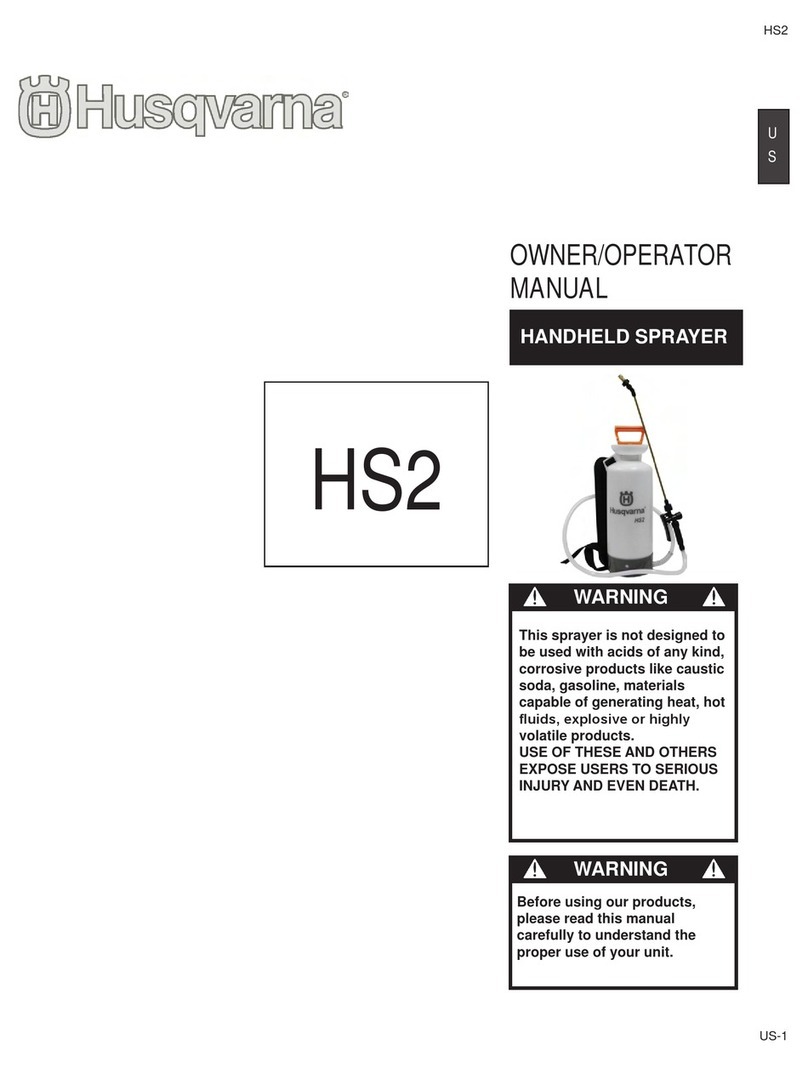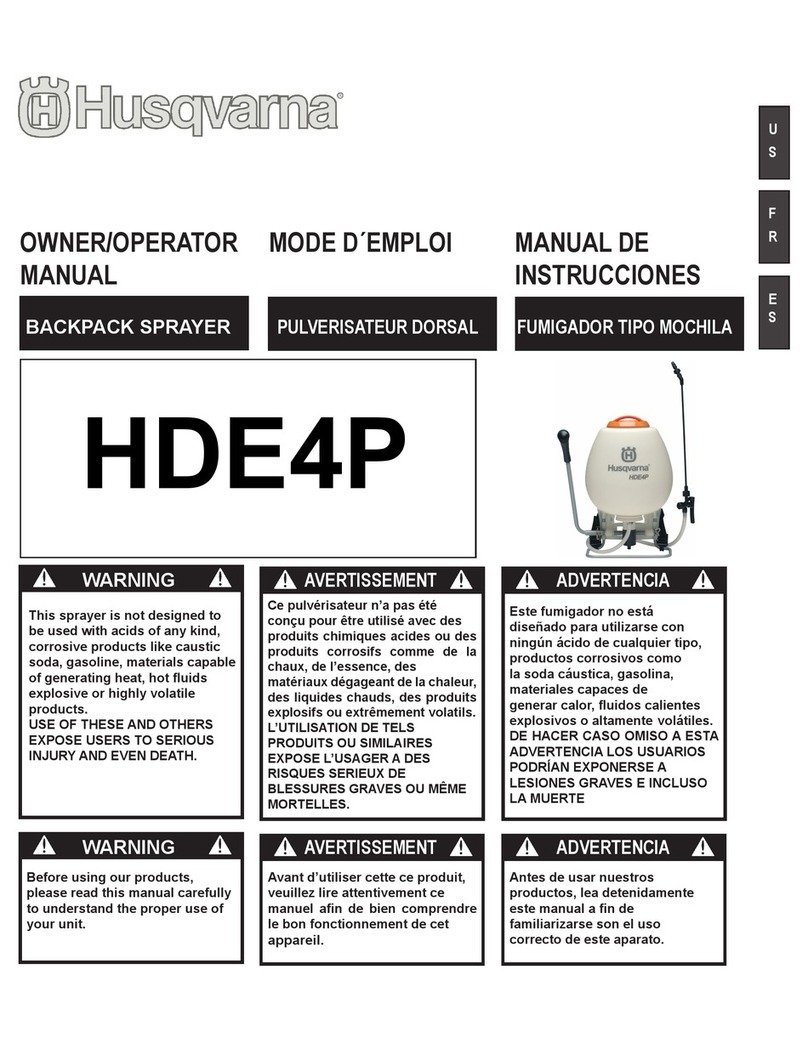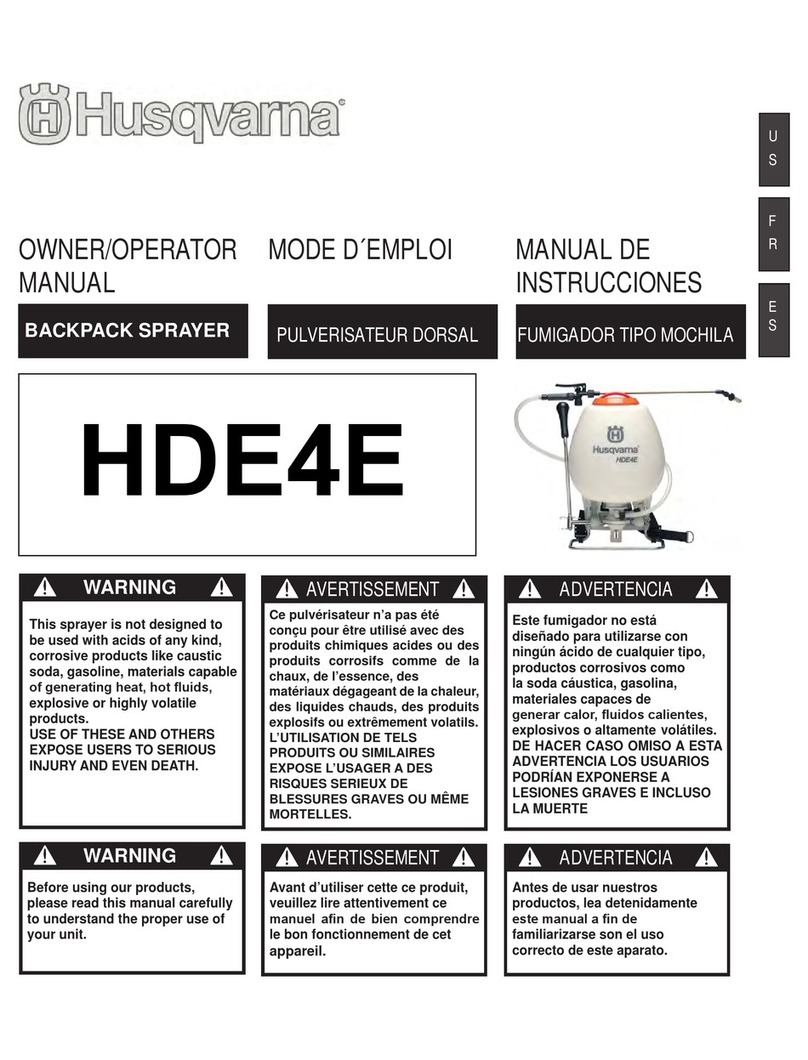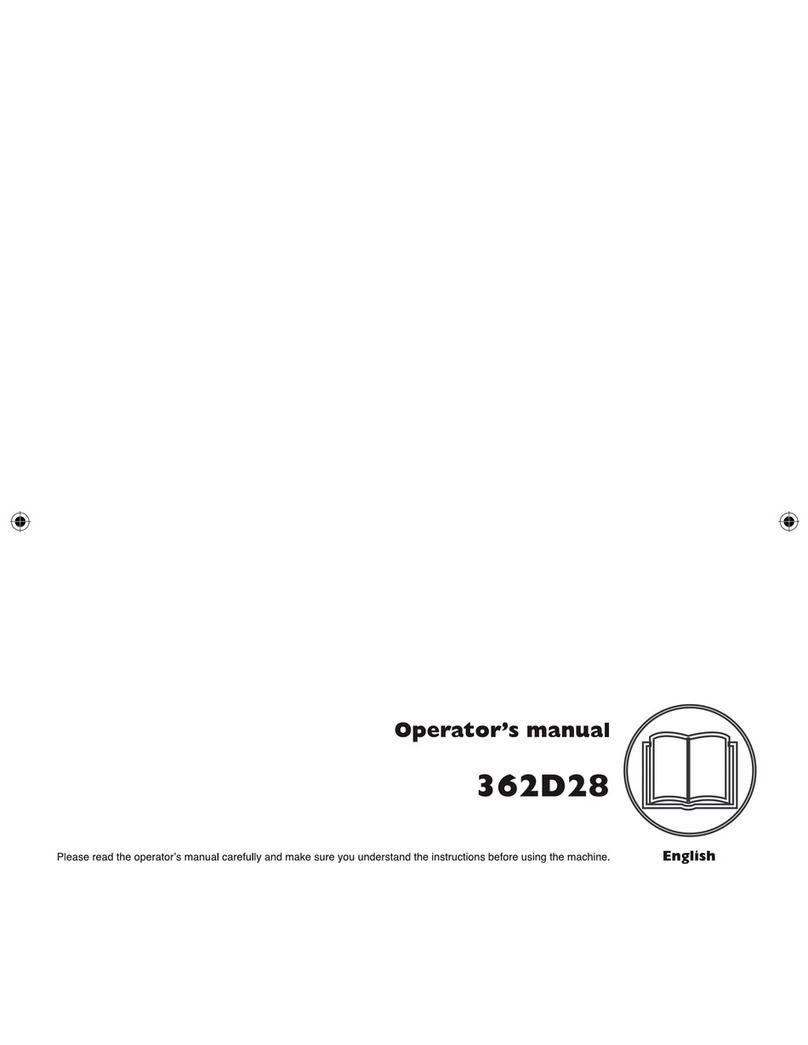325S25
GB-5
5. For safe operation
1. Protective headgear
2. Protective goggles
3. Protective mask
4. Rubber boots
5. Ear muffs
6. Neck covering
7. Protective clothing
8. Rubber gloves
9. Protective clothing
IMPORTANT
Check and follow the local regulations as to sound
level and hours of operations for the product.
PRECAUTIONS BEFORE SPRAYING
• Make sure you have the correct protective clothing,
headgear, rubber gloves and boots, a protective mask,
goggles, a towel, protective cream, etc., to prevent
chemicals from coming into contact with your skin or
entering your lungs. When spraying, please wear this
protective gear to prevent any risk of injury.
• Please store chemicals in a locked storage box, locker,
or other safe place out of the reach of children.
• Carefully read the instructions for using the chemicals,
and familiarize yourself with the level of toxicity, method
of use, etc.
• Please pay all due consideration to the area in which
you will be spraying, to ensure that you do not pollute
the water supply, rivers, lakes, ponds, etc., or cause
any damage to residents, passers-by, livestock, etc.
• Prepare yourself physically on the day before spraying,
by for example cutting down on alcoholic beverages
or late-night work.
Donotallowchildren,animals,etc.,toenterthechemi-
calsprayingarea.
• Before spraying, please prepare fully by inspecting
sprayer nozzles and checking for abnormalities such
as loose screws or spray hose connections, fuel leaks,
defective or broken uid gaskets, or damage to the
carrying band.
PRECAUTIONS WHEN TRANSPORTING CHEMICALS
• When transporting chemicals, please handle with care
to ensure that there is no spillage of chemicals from
torn bags, broken bottles, or loose stoppers.
• Do not carry chemicals in the same container as food.
PRECAUTIONS WHEN TRANSPORTING THE
SPRAYER
• Do not transport the sprayer while it has chemicals or
fuel in the tank, as these could leak out as a result of
impact during transportation.
• When transporting in a vehicle, please use a rope or
similar to x the sprayer rmly to the cargo trailer in
an upright position. Please do not transport by bicycle
or motorbike, as this is dangerous.
PRECAUTIONS CONCERNING FUEL
• The engine of this product is fueled by “mixed gasoline”
that includes highly combustible fuel. Do not refuel or
store fuel containers where there is any risk of com-
bustion from incinerators, burners, bonres, kitchen
stoves, electric sparks, welding sparks, etc.
• Smoking while spraying or refueling is dangerous.
Please avoid this at all costs.
• When refueling during use, always stop the engine and
make sure there are no naked ames in the vicinity
before relling.
• Any fuel spilt during refueling should be wiped off com-
pletely with a rag or similar before starting the engine.
• After refueling, seal the fuel container, tightly close the
fuel tank cap, and start the engine at least 3 meters
away.
PRECAUTIONS WHEN REFILLING CHEMICALS
• Before lling the tank with chemicals, please make sure
that the spray lever is completely at rest.
• After chemical relling, rmly tighten the tank cap. If
not fully tightened the cap may become loose during
spraying, with the risk of physical exposure to the
chemicals.
PRECAUTION WHEN STARTING THE ENGINE
• Please keep children, animals, etc. well away when
starting the engine and spraying.
PRECAUTIONS WHEN SPRAYING
• Since protective clothing generally offers poor ventila-
tion and thus places stress on the body, there is a risk
of contracting heatstroke or other illness when operat-
ing for long periods under high temperatures. Please
avoid spraying on hot days, aiming instead for early
morning and late afternoon times when temperatures
are relatively cool and winds are low.
• When starting work, please pay all due consideration
to the spraying time, wind direction, etc., to ensure that
no noise disturbance or chemical hazard is caused to
nearby residents, passers-by, farm crops, and so on.
• While spraying please hold the grip rmly at all times
and be careful not to point the nozzle in the direction
of people or animals.


